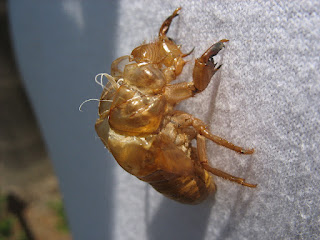
 Nota cultural sobre mi propia ignorancia: existe una diferencia entre le givre y la neige, aunque el resultado es el mismo (casi): todo se ve blanco. El primero dîcese del hielo que se encuentra TODAS las manianas sobre toda superficie congelable, el segundo es la nieve que se forma exclusivamente cuando llueve a 0°C... que por cierto no he visto aun. Todos los autos se congelan en la noche y yo soy el unico en toda Nancy que se maravilla de ello y que disfruta sin bufar (gesto predominantemente frances para expresar disgusto ligero pero incomodo) quitar con la palita de quitar hielo (porque aqui hay una cosa especial para todo) (y que Marie no tiene y por eso usa su tarjeta de credito) (bueno, quien sabe si es la suya). Asimismo, soy el unico que se detiene a tomar fotos de las fuentes congeladas (metaarte cronologico involuntario), las flores muertas por la helada, las bancas bajo el hielo y las ventanas fractalicas (y unas cacas congeladas que no me dejaron fotografiar y que de hecho lalo me habia comentado) y que se detiene a descifrar el origen etnico de cada no-blanco que se cruza en la calle.
Nota cultural sobre mi propia ignorancia: existe una diferencia entre le givre y la neige, aunque el resultado es el mismo (casi): todo se ve blanco. El primero dîcese del hielo que se encuentra TODAS las manianas sobre toda superficie congelable, el segundo es la nieve que se forma exclusivamente cuando llueve a 0°C... que por cierto no he visto aun. Todos los autos se congelan en la noche y yo soy el unico en toda Nancy que se maravilla de ello y que disfruta sin bufar (gesto predominantemente frances para expresar disgusto ligero pero incomodo) quitar con la palita de quitar hielo (porque aqui hay una cosa especial para todo) (y que Marie no tiene y por eso usa su tarjeta de credito) (bueno, quien sabe si es la suya). Asimismo, soy el unico que se detiene a tomar fotos de las fuentes congeladas (metaarte cronologico involuntario), las flores muertas por la helada, las bancas bajo el hielo y las ventanas fractalicas (y unas cacas congeladas que no me dejaron fotografiar y que de hecho lalo me habia comentado) y que se detiene a descifrar el origen etnico de cada no-blanco que se cruza en la calle. Para fumar, hace falta ser un adicto erizo nicotinico pero no friolento, porque sacar los dedos de los guantes es toda una hazania y no se puede fumar mas que en los cafes, los bares y las tabaquerias (y solo hasta el 1° de enero). Como dijo Serguei en NY: "either you drink or either you smoke, because you can't smoke indoors but you can't drink outdoors". De todos modos, pague mis 4.60 € para comprar mis Gauloises brunes-sans-filtre à la Cortâzar.
Finalmente, el tren ES la onda (mas que la Taq! aunque igual de caro), asi que unas mentadas de madre a Ernesto Zedillo por vender los Trenes Mexicanos. Nos quito el romanticismo de viajar en bola, viendo paisajes bonitos y con la oportunidad de ligar chicas guapas. Yo, encontre mi francesa.






















































